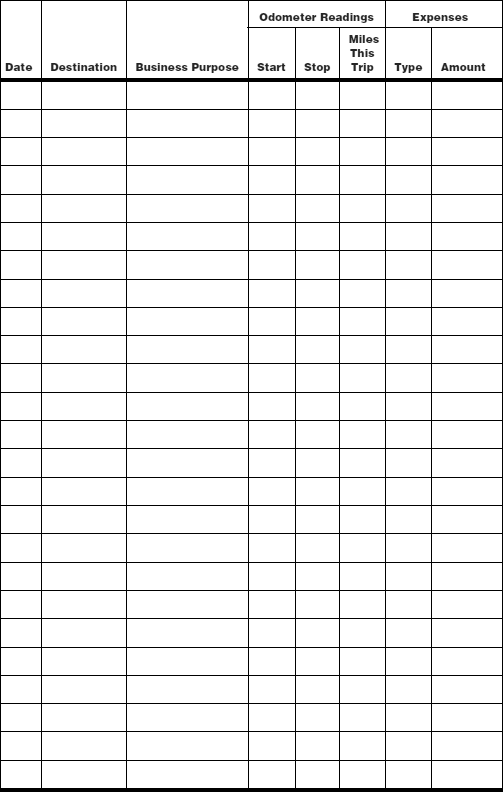Recordkeeping for Car Expenses
Regardless of whether you use the actual expense method or the standard mileage allowance for your car (or a car that your employer provides you with), certain recordkeeping requirements apply. You must keep track of the number of miles you drive each year for business, as well as the total miles driven each year. You must also record the date of the business mileage, the destination of the business travel, and the business reason for the car expense. It is advisable to maintain a daily travel log or diary in which you record the date, the destination, the business purpose of the trip, and the number of miles driven (use the odometer readings at the start and end of the trip, and then total the miles for each trip). Be sure to note the odometer reading on January 1 each year (Table 9.11).
TABLE 9.11 Business Mileage Log

If you use the actual expense method, you must also keep a record of the costs of operating the car. These include the cost of gasoline and oil, car insurance, interest on a car loan (if you are self-employed), licenses and taxes, and repairs and maintenance. Record these amounts in your expense log or diary.
If you lease a car, you must keep track of the amount of the lease payments, in addition to the number of miles driven (and the number of business miles), the dates of travel, the destinations, and the purpose for the travel.
Get J.K. Lasser's Small Business Taxes 2013: Your Complete Guide to a Better Bottom Line now with the O’Reilly learning platform.
O’Reilly members experience books, live events, courses curated by job role, and more from O’Reilly and nearly 200 top publishers.

